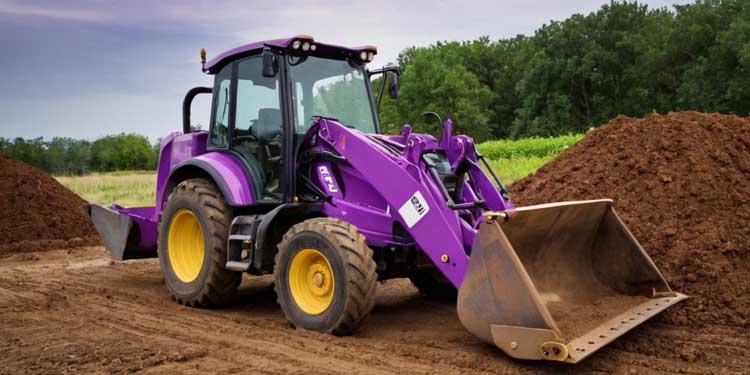The sight of bright yellow construction machinery has become so common that many of us don’t even think twice about it. From massive excavators to bulldozers, the vibrant yellow color is nearly synonymous with construction sites around the world. But why exactly is heavy machinery painted yellow? The answer lies in a mix of safety, practicality, and industrial standards.
The History of Yellow in Heavy Machinery
The adoption of yellow as the standard color for heavy machinery can be traced back to the mid-20th century when construction equipment manufacturers, such as Caterpillar, began using this bright color to improve visibility. The reasoning was simple: in dangerous environments like construction sites or mines, the ability to spot machinery from afar could help prevent accidents.
Initially, there was no uniform color across different manufacturers, but yellow quickly gained traction. By the 1950s and 1960s, major players in the industry adopted it as a standard. Today, the color is almost universally recognized as a safety measure for heavy equipment.

The Importance of Visibility in Work Environments
In high-risk environments like construction zones, ensuring visibility is paramount. Heavy machinery operates in close proximity to workers, who are often focused on their tasks rather than their surroundings. Having brightly colored equipment ensures that everyone can quickly spot it, even from a distance or in low-light conditions.
Your personal experience ties perfectly into this—you noted how yellow stands out against natural backgrounds like green vegetation or the browns and grays found in mines. This contrast minimizes the chance of accidental collisions or injuries, as workers can instantly identify the machinery.
In urban settings, where the color palette is more varied, yellow still manages to stand out. Whether it’s a bustling cityscape or a suburban construction site, the bright hue makes the machinery easy to spot, even against blue skies or neutral-toned buildings. This practical advantage goes beyond just visibility; it also reduces the cognitive load on workers, who can focus more on their jobs rather than constantly checking their surroundings for hidden equipment.
Safety Standards and Industrial Standardization
Yellow didn’t just become popular by chance. The color’s association with safety and caution played a critical role in its adoption. Think of road signs, traffic signals, and caution tape—they all use yellow to warn of potential danger. In the world of heavy machinery, this same principle applies. Yellow signifies caution and ensures that workers, pedestrians, and other vehicles approach with care.
You also pointed out that yellow is universally recognized as a color associated with alertness, which is why it’s been ingrained in safety practices across various industries, including construction and mining. The standardization of yellow for construction equipment isn’t just about aesthetics—it’s a deliberate choice to ensure safety.
Don’t forget, we also offer a wide range of spare parts for heavy machinery, so feel free to inquire about any replacement needs you may have. Just click on contact us.
Impact of Yellow in Different Work Environments
One of the most compelling reasons for using yellow in heavy machinery is its adaptability across a wide range of environments. Whether a machine is used in dense forests, urban areas, or wide-open fields, yellow remains highly visible.
In natural settings like forests, where green dominates, the contrast of yellow is striking. Workers can easily spot a yellow excavator or bulldozer amidst the trees. Similarly, in mining environments, where dust and dirt create a mostly brown or gray landscape, yellow machinery stands out sharply, preventing accidents in areas with poor visibility or lighting.
In more urban environments, despite the array of colors in cities or construction zones, yellow still manages to differentiate itself. As you mentioned, yellow contrasts effectively with everything from the blue of the sky to the darker tones of roads and buildings, making it easy to locate machinery at a glance.
Yellow and Its Connection to Traffic Signals and Caution
Another interesting reason yellow is so effective is its relationship with traffic signals and other cautionary markings. Across the world, yellow is used to signal caution, whether in road signs or traffic lights. This widespread association means that people instinctively connect yellow with the need to be careful, making it a natural choice for heavy equipment in potentially dangerous environments.
Your personal experience further highlights this universal understanding of yellow as a warning signal. When people see heavy machinery painted yellow, they’re automatically more cautious, which helps reduce the number of accidents and injuries on construction sites.
The Chemical Properties of Yellow Paint for Machinery
Aside from safety and visibility, another reason why yellow is used for heavy machinery is its durability. The paint used on these machines needs to be resistant to harsh environmental conditions like extreme temperatures, corrosion, and exposure to dirt and chemicals. Yellow pigments tend to hold up well under these conditions, ensuring that the equipment remains visible for many years.
As you pointed out, yellow paint is not just for visibility but also contains chemical properties that protect the exterior of the machinery. This makes it a practical choice, as it enhances the longevity of the machine while also maintaining safety standards.
Yellow as a Symbol of Safety and Efficiency
In the end, the choice of yellow for heavy machinery is much more than a visual preference—it’s a vital part of workplace safety, a standard that has been reinforced over decades. The color’s high visibility, its connection to caution, and its protective properties all contribute to why it remains the go-to color for heavy equipment manufacturers worldwide.
Yellow serves as a constant reminder to stay alert, ensuring that workers and bystanders recognize the presence of potentially dangerous machinery, no matter the setting. Your personal insight perfectly complements this view, highlighting how the color plays an essential role in different environments, from mines to urban areas, making it universally effective and indispensable in the industry.
